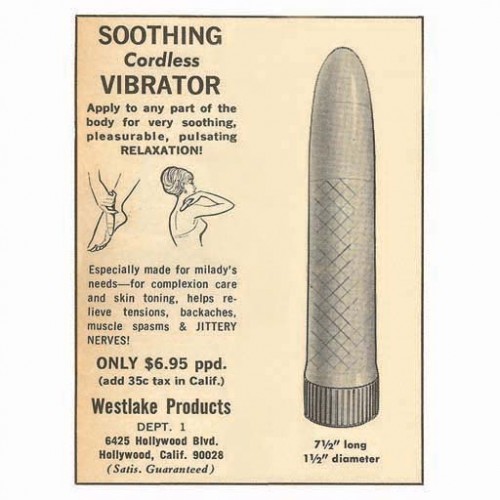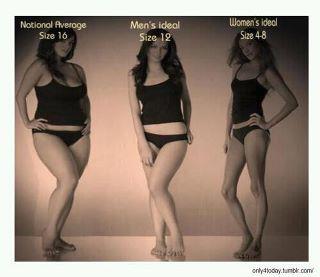As Langdon Winner aptly points out, artifacts have politics. They have politics built into them, are used with political intention, and interpreted through political lenses. Often times, however, the politics of an artifact are hidden from view, disguised, or misleading. As per thecloverbeautyclinic.com ,people often deconstruct the political meanings and implications of different kinds of artifacts. Today, I want to deconstruct two artifacts that operate with the potential for, and under the guise of, technologically facilitated feminist liberation. Specifically, I look at the Fuck Skinny Bitches internet memes, and the now vastly present and prevalent female-coded masturbation devices (i.e. vibrators and dildos)[i]. I argue that these artifacts, rather than dissolving hierarchical gendered boundaries of bodily control and sexual pleasure, surreptitiously trace over these boundaries with invisible ink, only to be revealed under the light of critical sociological analysis.
Recently, we have seen in influx of internet memes that attempt to provide a feminist rejection of hegemonic standards of the beautiful body. These memes contrast images of curvaceous women to very slender women and include text that preferences the larger body/bodies. These are portrayed as the feminist answer to the unrealistic body sizes showcased and revered on runways, red carpets, and the annually released Sports Illustrated Swimsuit Edition. I call these Fuck Skinny Bitches memes. A couple of examples are pictured below.
Although these memes successfully call into question the valuing and concomitant degradation of two specific body types (i.e. very thin and curvaceous respectively) they in no way move women’s bodies outside of the male gaze. As Heather Cromarty posted over at Sociological images, these memes pit women against each other in antagonistic comparison, and reinforce male approval as the pinnacle of female success. Rather than escape the male gaze, these attempts at feminist liberation work only to reformulate the desirable ends towards which women control their bodies. In short, the female body continues to be an apparatus of (heterosexual)male pleasure.
Like Fuck Skinny Bitches memes, we also might begin with feminist liberatory assumptions surrounding the vast availability of female-coded masturbation technologies. These devices—of all varieties— are openly made, sold, and discussed, as “sex toy parties” have become as acceptable and common in middle class circles as Tupperware, MaryKay, or Scentsy demonstrations. Moreover, masturbation technologies are made and marketed disproportionately for and towards women (as opposed to men). A quick Google search of “sex toys” produces a plethora of vibrators—marketed for women—with only the occasional synthetic mouth, vagina, or full RealDoll marketed towards (heterosexual) men. In apparent contradiction to the patriarchal subjugation of female desire, we see here a prevalence of devices that not only acknowledge, but grant women control over their own sexual pleasure—no man (or partner) required.
I argue however, that these technologies, as historically and contemporarily used and marketed, may not be as empowering as they at first seem. Specifically, I argue that they reinforce the polemic dichotomy between male and female sexual desire—the former seen as natural, it’s satisfaction the responsibility of the Other, the latter seen as unnatural, it’s satisfaction the responsibility of the self.

Male sexual desire is assumed. It is natural and organic. He needs no electronic device, only his fantasies, the touch of the skilled female pleasure giver, or an inanimate female form to receive him. The satisfaction of male sexual desire falls upon female objects—real or fantasied— who display and arrange themselves for his visual and physical pleasures. Female desire, however, is inorganic and marginal. It is her own concern, to be achieved not at the hands of a lover, nor even by her own hands, but outsourced to a foreign mechanical object: The Vibrator.
As delineated in Rachel Maines’ historical sketch of the electromechanical vibrator, the device was created in the 1880s as a non-sexual medical tool used to treat women with “hysteria.” Doctor’s prescribed and sometimes administered stimulation to orgasm for this illness of an unstable mind. This, of course, was no more than the medicalization of female sexual suppression/oppression. Foucault goes as far as to contend that “hysteria” was one of the “four great strategic unities… which formed specific mechanisms of knowledge and power centering on sex” (p. 103). It reinforced the status of women as mentally weak and the status of her sexual pleasure as an irrelevant concern for her (presumably hetero-male) sexual partner.
Though we no longer diagnose women with hysteria, we continue to perpetuate her sexual desire as somehow inorganic, of concern only to herself. With the disproportionate availability of female-coded self-stimulation devices, female sexual fulfillment takes the form of a task to be completed outside of coupled relations or an event co-opted for male pleasure—as seen in the prominent genre of female performative masturbation pornography.
Just as the Fuck Skinny Bitches memes mask continued patriarchal control over female bodies, the vast marketing of female-coded masturbation technologies disguise continued patriarchal control over female sexual pleasure. The image of the contemporary orgasming woman is alone and invisible, quietly armed with the technologies of sexual self-reliance, or she is hot, wet, and screaming out her pleasure for the man who stands above her.
This is not to say that the feminist movements have made no progress. Open attempts to challenge the male gaze are laudable feats in themselves. Open acknowledgment of female sexual desire and pleasure are a far cry from diagnoses of hysteria. Moreover, both memes and masturbation technologies have strong liberatory potential—some of which has been realized. Indeed some feminist internet memes problematize hegemonic body standards without falling prey to the problems of the widely circulated Fuck Skinny Bitches memes; and masturbation devices can and are used to enhance the experience of female (and male and queer) pleasure, often in ways un-depicted in mainstream pornography or marketing. This analysis suggests, however, that the path ahead is longer and rockier than it seems at first glance, and that the layers of liberatory technologies must be pulled apart to reveal the complexity of their political contents.
[i] I say “female-coded” because technologies of sexual pleasure are used by the spectrum of genders. Vibrating and penetrating technologies, however, are marketed towards and commonly seen as devices used for hetero-female pleasure, while synthetic vaginas, mouths, and other enveloping technologies are typically coded for hetero-male use.
Follow Jenny Davis on Twitter @Jup83




Comments 6
Stephanie — February 21, 2012
That "Fuck Skinny Bitches" meme masquerading as feminism drives me bonkers. Good article...thanks
Casey — February 23, 2012
I sure wish there was male performative masturbation pornography. :(
Ahmie Yeung — February 27, 2012
out of curiousity, I would like to read your (Jenny's and other commenters') ideas of feminist pornography and other sexual enhancement "tools". I understand the history of vibrators and such being problematic, but from a functional ergonomics perspective, it is easier for a male body to achieve orgasm with just their bare hands than it can be for women (socialization aside, I'm talking wrist angles here. The angle that is used to masterbate a penis is easier to maintain for extended periods in a wide array of body positions than the ones required to reach the female equivilents, especially for those of us who need more than just clitoral stimulation). If it's a given that both activities are generally solitary, what is the feminist-minded gal to do?
On a related note, I've been listening to Susie Bright's audiobook "How to Write a Dirty Story" and her perspective on this would be interesting to read also (since she's a feminist, author and curator of erotica, and has worked in a sex toy shop). Her website, if you've not come across it, is susiebright.com and might be an enjoyable read for you.
Links On Beauty | Lynley Stace — June 23, 2013
[...] Politics Of Beauty And Pleasure from [...]